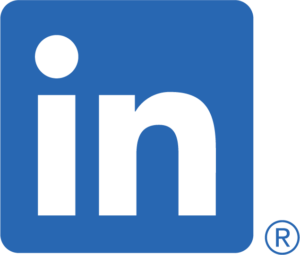
This is the fifth post in a new series in which we revisit the fundamentals of business communication, from what it means and why it matters to tips and techniques for success. We’ll present the information in ways that you can share directly with your students, and we hope this information will enhance your lectures and class discussions.
Ethical communication includes all the information an audience needs to make an informed decision or take an informed stance on an issue and is not deceptive in any way. Whenever you communicate in business, you ask audiences to trust that you will provide information that is complete and true.
If you intentionally violate that trust, you have engaged in unethical communication. Unethical communication can take several forms: withholding information, distorting information, and plagiarizing. Note that some of these choices can also be illegal in certain circumstances.
Withholding Information
Senders can be tempted to intentionally withhold information, such as avoiding taking responsibility for mistakes or presenting an incomplete set of facts when making a proposal. The widespread use of social media has increased the attention given to the issue of transparency, which in this context refers to a sense of openness, of giving all participants in a conversation access to the information they need to accurately process the messages they are receiving.
In addition to the information itself, audiences deserve to know when they are being marketed to and who is behind the messages they read or hear. Two important concerns in this regard are native advertising and stealth marketing. Native advertising, also known as sponsored content, is advertising material that is designed to look like regular news stories, articles, or social media posts. The U.S. Federal Trade Commission (FTC) requires companies to label such material as sponsored content if it is likely to mislead consumers into thinking it is “anything other than an ad.” Industry groups such as the Word of Mouth Marketing Association and the Interactive Advertising Bureau give their members specific guidelines to help prevent consumer confusion.
Stealth marketing is the practice of promoting companies and products without making it clear to the audience that marketing activity is taking place. For example, “street team” marketing, in which team members promote goods and services to their friends and members of the public in exchange for prizes or other compensation, is unethical if team members don’t disclose the fact that they are affiliated with a company and are being rewarded for their efforts. Such practices also violate FTC advertising guidelines.
Distorting Information
Intentionally distorting information is also a form of unethical communication. This distortion can involve words, numbers, or images. For example, selectively misquoting someone in order to create a different impression than that person intended is unethical. Statistics and other numerical data can also be presented in ways that distort their implications.
Two examples are using averages to conceal extreme individual values and manipulating trend calculations to suggest future values that the underlying data might not support. For example, you might boast that sales increased 40 percent in April as evidence of a big upward trend, when in fact March sales had been a disaster and all that 40 percent increase did was bring sales back to their earlier level.
Images can be manipulated in unethical ways, such as altering photos or changing the scale of graphs and charts to exaggerate or conceal differences. Distortion and outright fabrication of information are becoming greater concerns as the tools for manipulating sound, images, and video become more sophisticated.
Convincingly “Photoshopping” images to fool audiences (using Adobe Photoshop or a similar program) has been possible for a while now, and the same potential for deception is becoming possible for sound and video files—a phenomenon known as deep fakes.
Business communicators must be more vigilant than ever as information consumers and more careful than ever as information creators.
Plagiarizing
Plagiarism is presenting someone else’s words or other creative product as your own. Note that plagiarism can also be illegal if it violates a copyright, which is a form of legal protection for the originators of creative content. Copyright law covers a wide range of creative expression, including writing, visual design, computer programming, and sound and video recording.
Note that plagiarism standards and copyright law don’t mean you can never use someone else’s work. However, you must use it ethically and legally, including properly documenting your sources, clearly labeling anyone else’s words and images as theirs, and using only minor portions, such as brief quotations. (Depending on the nature of the project and the material, you might need to get written permission to use material.) You can be sued for copyright infringement if you copy a significant part of a work, even if you don’t copy it word for word or profit from doing so.
The concept of fair use provides some flexibility in using others’ creative work without violating copyright, particularly for noncommercial use, but there are no precise guidelines on how much you can use. And as attorney Kerry O’Shea Gorgone explains, fair use can only be invoked as a legal defense after a copyright owner sues you for infringement. You can’t simply take someone else’s content and preemptively label it as “fair use.”
Get in the habit of double-checking yourself on these pitfalls, and you’ll be assured of earning respect as an ethical communicator.
Adapted from Courtland L. Bovée and John V. Thill, Business Communication Today, 15th Edition, 2021, p. 24–25. The basic communication process is also addressed in our titles Excellence in Business Communication, Chapter 1, and Business Communication Essentials, Chapter 1.
 This is the fourth post in a new series in which we explore a variety of essential skills for using digital, social, and visual media. We’ll present the information in ways that you can share directly with your students, and we hope this information will enhance your lectures and class discussions.
This is the fourth post in a new series in which we explore a variety of essential skills for using digital, social, and visual media. We’ll present the information in ways that you can share directly with your students, and we hope this information will enhance your lectures and class discussions.
 LinkedIn is the most important website for students to incorporate in their job search efforts. Employment recruiters search LinkedIn for candidates far more than any other social network, many employers now want to see LinkedIn profiles rather than conventional résumés, and companies doing background checks are almost certain to look for candidates’ LinkedIn profiles.
LinkedIn is the most important website for students to incorporate in their job search efforts. Employment recruiters search LinkedIn for candidates far more than any other social network, many employers now want to see LinkedIn profiles rather than conventional résumés, and companies doing background checks are almost certain to look for candidates’ LinkedIn profiles.
 When manufacturers produce something, an essential step in the process is quality assurance (QA), a methodical evaluation of the product’s quality relative to its design goals. This is the last chance before the product ships out to customers to make sure it is something the company can be proud of.
When manufacturers produce something, an essential step in the process is quality assurance (QA), a methodical evaluation of the product’s quality relative to its design goals. This is the last chance before the product ships out to customers to make sure it is something the company can be proud of.